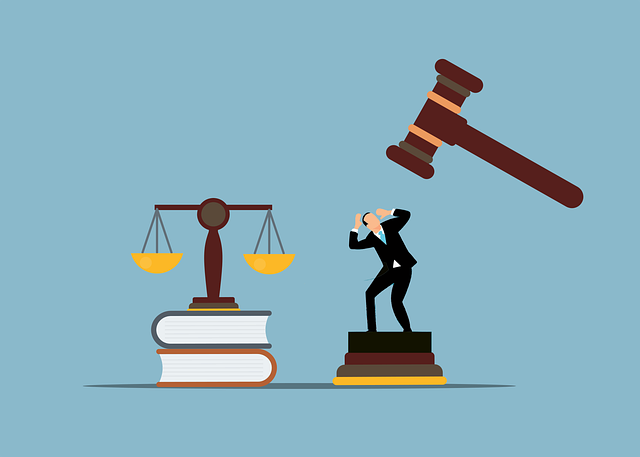Understanding litigation risk and intellectual property (IP) is crucial for protecting patents, trademarks, copyrights, and trade secrets. Recognizing potential risks early on in IP lawsuits is vital due to their complex nature and significant financial implications. Businesses must define and assess these risks, involving steps like identifying infractions, gathering evidence, consulting legal experts, serving formal notices, and engaging in dispute resolution methods. The ultimate goal is to protect IP rights through a successful settlement or trial verdict, while minimizing financial and reputational losses. Skilled counsel is essential for navigating the legal process and developing robust strategies for defense or winning outcomes.
In today’s competitive landscape, managing litigation risk is crucial for businesses, especially in intellectual property (IP) domains. This article guides you through the intricate process of mitigating risks associated with IP disputes. We’ll explore defining and understanding various types of IP conflicts, from copyright and trademark infringements to patent-related issues. Learn effective pre-litigation strategies to protect your assets, including due diligence, NDAs, internal policies, and alternative dispute resolution. Additionally, discover the steps involved in filing a robust intellectual property lawsuit, ensuring success through proper evidence, jurisdiction selection, and comprehensive legal documentation.
- Understanding Litigation Risk and Intellectual Property
- – Defining litigation risk in the context of intellectual property (IP)
- – Types of IP disputes and their potential impact on businesses
Understanding Litigation Risk and Intellectual Property
Understanding Litigation Risk and Intellectual Property is a pivotal first step in any legal strategy. Intellectual property (IP) includes patents, trademarks, copyrights, and trade secrets, which are crucial assets for businesses and individuals alike. Protecting these rights is not just about avoiding lawsuits; it’s about safeguarding innovation, creativity, and hard-earned achievements. IP can give a competitive edge, drive economic growth, and foster philanthropy and political stability across the country.
When contemplating steps to file an intellectual property lawsuit, recognizing potential risks is paramount. High-stakes cases often involve complex legal arguments and significant financial implications. A thorough assessment of your situation allows for proactive risk management, enabling you to navigate the litigation landscape with confidence. This includes identifying the specific IP at issue, evaluating its value, and understanding the probable outcomes — all crucial factors in deciding whether to pursue a lawsuit or explore alternative dispute resolution methods.
– Defining litigation risk in the context of intellectual property (IP)
In the realm of intellectual property (IP) management, litigation risk refers to the potential for legal disputes arising from perceived or actual IP infringement. This can span patents, trademarks, copyrights, and trade secrets, where parties may file an intellectual property lawsuit to protect their rights or seek compensation for misuse. Defining these risks is crucial in navigating the complex landscape of IP law, especially as disputes can have significant financial and reputational implications for respective businesses across the country. Understanding the nuances of each IP category and potential infringements is the first step in mitigating these risks.
The steps to file an intellectual property lawsuit involve a series of strategic decisions. It begins with identifying potential infractions, gathering evidence, and consulting legal experts familiar with IP law. Once justified, the process involves serving formal notices, engaging in negotiations or mediations, and if necessary, filing a complaint with the appropriate court. The goal is to secure a complete dismissal of all charges or reach an amicable settlement, ensuring the respective business’s intellectual property rights are protected.
– Types of IP disputes and their potential impact on businesses
Intellectual Property (IP) disputes can significantly impact businesses, potentially leading to financial losses, reputational damage, and disruption in operations. These conflicts arise from allegations of patent infringement, trademark misappropriation, copyright violation, or trade secret theft. For instance, a patent dispute could halt product development and sales, while a trademark disagreement might hinder marketing efforts and brand recognition.
Businesses facing IP lawsuits must understand the legal process, including the steps to file an Intellectual Property Lawsuit, which often involves extensive research, documentation, and expert testimony. Navigating these complex matters requires skilled counsel who can present a compelling defense or secure winning challenging defense verdicts. By employing robust strategies and leveraging their expertise, attorneys can help clients achieve extraordinary results in jury trials, ensuring the protection of their valuable IP assets.
Effective litigation risk management is paramount for any business, especially when dealing with intellectual property. By understanding the diverse range of IP disputes—from patent infringements to trademark conflicts—companies can proactively mitigate potential damage. The first step towards protection is recognizing and assessing these risks. For those facing an IP lawsuit, understanding the process and taking prompt action, such as consulting legal experts and following the steps to file an intellectual property lawsuit, can be key to a successful outcome.






